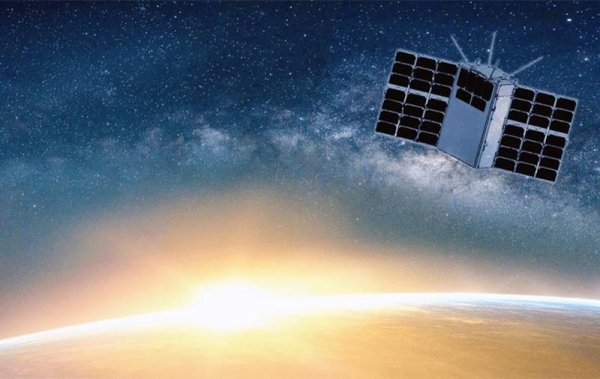
KAUST and Spire unveil plan to launch nanosatellite ‘KAUST CubeSat’
King Abdullah University of Science and Technology (KAUST) and Spire Global (Spire), a leading provider of space-based data, analytics and space services, announced their plans to pursue a collaborative nanosatellite mission with the launch of KAUST CubeSat.
The research satellite, the first of its kind in the Kingdom, aims to collect high-quality and high-resolution data across global terrestrial, coastal and ocean ecosystems for a three-year period starting from the end of 2022.
Matthew McCabe, director of the KAUST Climate and Livability Initiative, said that the 6U CubeSats are helping to democratize space, providing the opportunity to launch a customized platform at a fraction of the traditional cost. In the past, launching a satellite was the sole domain of governments, with costs well beyond the reach of a university, he said.
“The capacity to observe the earth in high-resolution hyperspectral detail will allow for the production of enhanced metrics to map and monitor change anywhere in the world. Closer to home, Saudi Arabia is focusing considerable effort towards the protection and restoration of its precious terrestrial and ocean systems,” he said.
According to McCabe, the data from KAUST CubeSat will be invaluable in providing new information on both the state of existing ecosystems, and for monitoring changes resulting from improved management strategies — something that can be used to support aspects of the Saudi and Middle East Green Initiatives.
“The Kingdom is making great efforts in the field of protecting and restoring ecosystems on land and at sea, and the data provided by this satellite will be extremely important, especially in providing high-resolution details about the current conditions of ecosystems in the region, and monitoring improvements resulting from management strategies, environment, and thus support the Green Saudi Initiative and the Green Middle East Initiative,” he said.
“The satellite is the most technologically advanced as it combines the expertise of Spire in developing Global Navigation Satellite System reflectors (GNSS-R) and hyperspectral imaging devices supported by advanced capabilities in processing and artificial intelligence.
“This will allow KAUST researchers to collect, analyze and use high-resolution images of the earth’s surface to draw detailed maps of terrestrial environments, as well as monitor the health and condition of vegetation, explore coastal ecosystems and coral reefs, advance precision agriculture research, and a host of other earth and environmental science applications,” he pointed out.
Dan Isaac Rivera, business development executive at Spire, said that the technological progress made in Saudi Arabia and across the wider region in recent years has been impressive.
“We are pleased to note that the Kingdom is the location for our first Space Service agreement in the Middle East. We look forward to further collaboration with KAUST to explore the scientific benefits of combining these two complementary types of remote sensing data and in supporting the Kingdom of Saudi Arabia as it works towards meeting its ambitious Vision 2030 goals.”
The nanosatellite will carry a high-performance hyperspectral sensor with the capability to observe areas of interest anywhere in the world across more than 30 user-configurable spectral bands in the visible to near-infrared (VNIR) spectrum.
Apart from delivering hyperspectral insights, the data generated by this sensor can also be combined with Spire’s GNSS receiver to monitor critical variables such as the presence of moisture in the soil.
It is expected that the outcome of combining these two capabilities is the delivery of unique insights across multiple domains, including agriculture, forestry and land management.
It is noteworthy that the services of the KAUST CubeSat research satellite will not be confined only within the Kingdom, but can be expanded to include the entire world, enabling KAUST researchers and their international collaborators to focus their attention on global ecosystems to explore diverse landscapes, seascapes and interconnected environments.
This innovative mission of KAUST is regarded as an exciting starting point for future collaboration between KAUST and Spire.
The emergence of novel nanosatellite platforms that can combine and leverage complementary sensors has the potential to deliver new insights across diverse ecosystems.
This advanced KAUST satellite mission will not only provide the tools to monitor local change at global scale, but also deliver the information needed to respond to these in a timely manner.



























